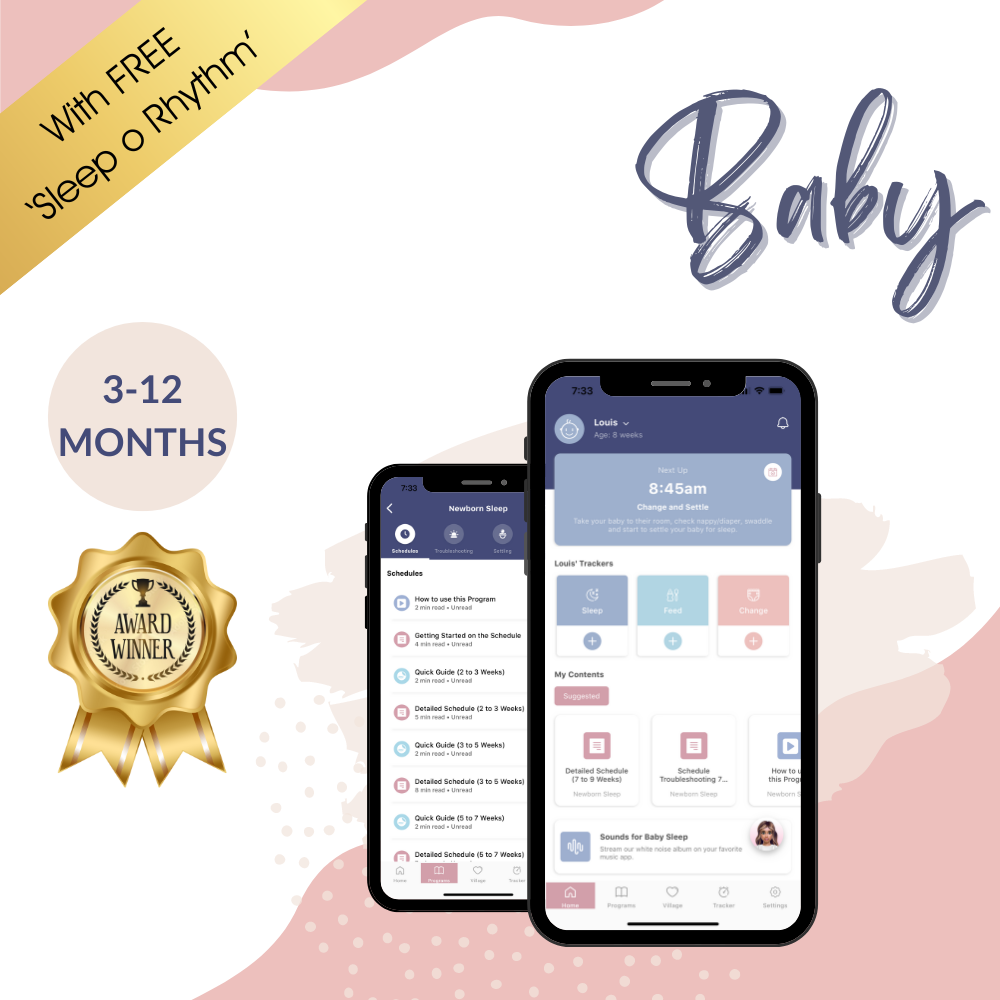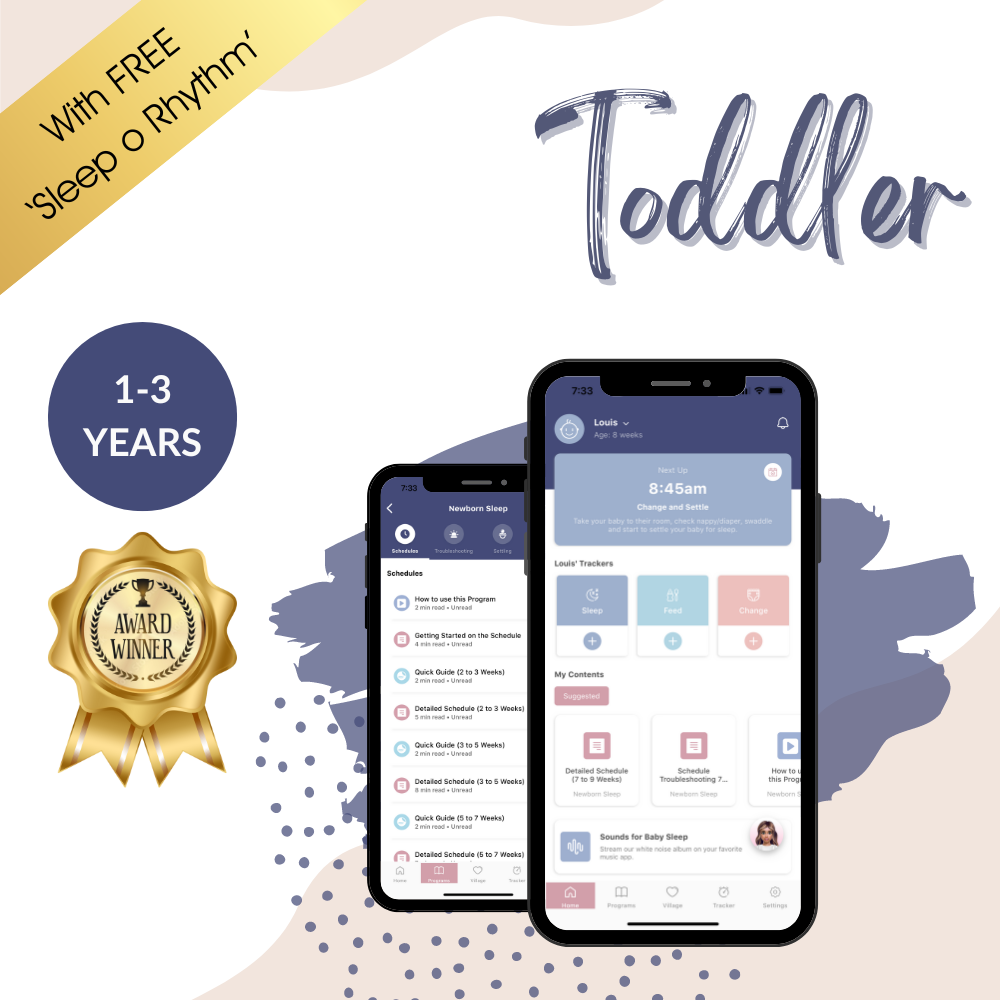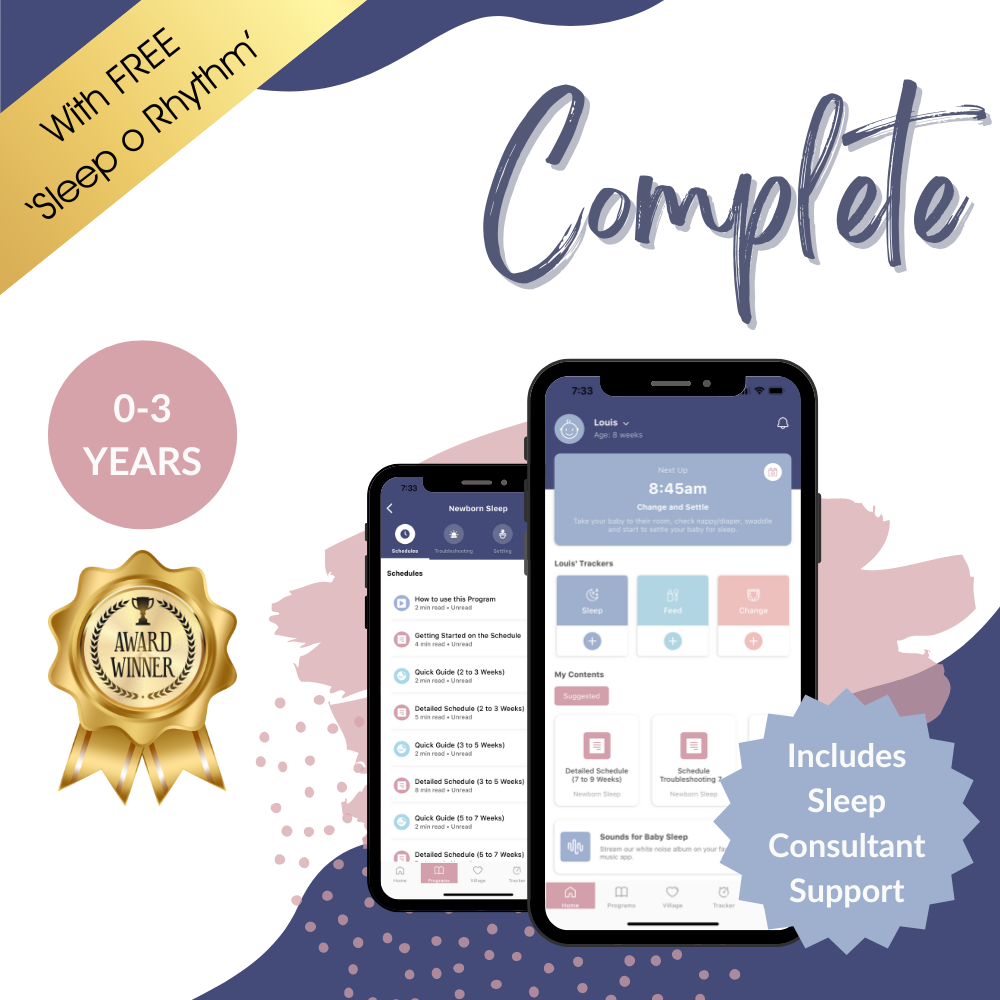
6-8 months - Dropping from 3 naps to 2
By Nicky Barker (BA, Grad. Dip Tch, University of Auckland), Pediatric Sleep Science Expert
Daytime naps are super important for our little ones, but the importance of these day sleeps isn't stressed enough, nor is it emphasised how it can affect your baby's development and behaviour if they are not getting enough sleep.
In fact, research shows that toddlers who miss only a single daily nap show more anxiety, less joy and interest and a poorer understanding of how to solve problems.
With this in mind, the idea of dropping a nap may sound bizarre, but it all comes back to day sleep affecting nighttime sleep and as your baby grows older, their sleep needs change.
In this article:
- What is a nap transition?
- Signs your baby is ready to drop a nap
- How to manage the 6-8 month nap transition
- How long does this nap transition take?
- What else can affect a baby's sleep at this age?
- What happens if I drop a nap too soon?
Feeling confused about your baby's sleep needs?
Let our sleep experts help you every step of the way. Together we can solve your little one's sleep challenges
Get our Sleep Programs
So, what is a nap transition?
As your baby gets older, their sleep needs will change and one by one, they will gradually drop their naps. For more information on when these nap transitions occur, see THIS article.
If your wee one is between 6-8 months and has started fighting you to go to bed or they’re waking more overnight, it’s more than likely time to drop anap.
By this age, your baby should have consolidated their day sleep into 3 regular naps. Now, your little one will be getting ready to transition from 3 naps, down to 2, dropping the late afternoon nap.
BUT before you make this change, we would first suggest ruling out the following:
- over and under tiredness
- hunger
- unable to self-settle
- issue in the sleep environment
- teething or sickness
Dropping a nap is no easy feat, so you don't want to rush into it before your little one is ready. This transition also takes time and your 6 month old's sleep could potentially get worse before it gets better!
Signs your baby is ready to drop a nap
One thing to remember is not all changes in sleep patterns mean it’s time to drop a nap.
In fact, it could be a sleep regression that’s wreaking havoc on your little ones sleep. To find out more about these pesky disruptions to your wee one's sleep, read our sleep regression article HERE.
There are also lots of developmental milestones that your baby will experience like sitting, rolling, starting solids etc - all of which can affect their sleep.
But if you do suspect it’s time to drop a nap and can rule out the other causes that we listed above, then the key things you need to look out for (over the course of several days in a row) are:
- Taking a long time to settle at the normal nap time.
- Settling well but waking early from the nap.
- Settling well at one nap but not tired and not sleeping well at the next nap.
- Settling/sleeping well at naps but taking a long time to go to sleep at bedtime in the evening.
- Waking overnight multiple times or waking and staying awake for long periods.
- Waking in the early morning (before 6 AM) and not resettling back to sleep.
TIP: Your little one may start showing some of these signs at 5 months, but hold up - this doesn’t mean it’s time to drop a nap yet. At this age, you still want to aim for a short late afternoon power nap until your baby reaches at least 6 months. This will stop your wee one from becoming overtired come bedtime.
Say goodbye to sleepless nights.
Join over 800,000 families worldwide who are enjoying excellent sleep with our Sleep Programs, created by experts in the field of pediatric sleep.
Get our Sleep Programs
How to manage the 6-8 month nap transition
Nap transitions need to be handled delicately. Sometimes it does also take a bit of trial and error to work out if dropping a nap is the thing that your child needs at that time.
Here are our tips to make this nap transition smoother for you and your little one:
- Try dropping the late afternoon nap for at least a week to see if it works. Your baby will take a while to get used to this change and can be grizzly during this time.
- Aim for a shorter morning nap and longer lunch nap around midday. This transition is a lot easier for babies who are having that longer nap in the middle of the day because it means they are going into the afternoon well rested and will be less overtired come bedtime. Babies who are having a long morning nap and a shorter midday nap are more likely to get overtired by bedtime, which can cause difficulties settling and more night and early morning waking.
- To help your baby adjust, bring bedtime earlier to compensate, eg 6:30 pm. This will help your little one get used to the longer awake time. By 8 months old, you should find that your baby is ready for a bit more awake time and can push bedtime out a bit later.
- You can replace the third nap with quiet time so that they are still getting rest.
Remember, your little one isn’t going to simply just drop their nap one day and that's it - it will take some time!
Let's get your little one's sleep sorted ASAP!Our award-winning Sleep Programs will solve your baby's sleep challenges in no time.
Get our Sleep Programs
With that in mind, we recommend slowly reducing the third nap before you try dropping it altogether. Be sure to do it slowly and shorten it by 5 minutes every 2 days and bring bedtime forward by 5 minutes too. Do this until the nap has completely gone and bedtime is at 6.30 PM.
How long does this nap transition take?
You can’t rush these things. Each transition is different and the timing has to be dictated by your baby’s developmental needs. It can also depend on your little one’s nap structure leading up to the transition. Our sleep and feed schedules in the Little Ones App help to prepare your baby for this transition by gradually reducing the afternoon nap.
It’s best to take it day by day, as it will depend on how your baby has slept for their other naps that day and overnight. We suggest giving it a good week to see any real effect of your baby’s new nap schedule.
Between 6-8 months, your baby might still need the late afternoon nap on and off again depending on how their day sleep has gone. If they haven't napped well earlier in the day, or achieved a deep sleep at their midday nap, then you may want to give them a quick 10 minute power nap in the afternoon to help them get through to bedtime.
By 8 months the third nap should be gone altogether, or it will really start wreaking havoc with their night sleep leading into the 8-month regression.
What else can affect a baby’s sleep at this time?
It’s important to remember that there is A LOT happening in your baby’s life at this age that could be impacting their settling or overnight sleep:
- Your baby could still be in the midst of the 4-month regression. If your baby is unable to self-settle then they’re going to be having shorter naps of around 35-45 minutes each, which will mean they can’t drop the third nap just yet or they will be very overtired by bedtime.
- Around 6 months old, your little one will also be ready to start solids, which can impact their sleep. The World Health Organization says “around the age of 6 months, an infant’s need for energy and nutrients starts to exceed what is provided by breast milk, and complementary foods are necessary to meet those needs.” You can find out more about starting solids HERE.
- Your little one is also learning new skills like rolling, sitting and crawling - which they may want to practice when they should be sleeping!
So your baby all these massive things happening in their lives and then you throw in a nap transition as well! It can be a hard time for them, especially when it comes to sleep, but it is definitely made easier with a consistent, predictable sleep schedule like the ones found in our Little Ones App.
What happens if I drop a nap too soon?
Once you drop the late afternoon nap, keep an eye out for changes in your little ones mood, behaviour or sleep. You may find they wake more at night or early in the morning, are restless in their sleep or refuse the remainder of their naps. This can be a sign that they are overtired and can't tolerate the longer awake time yet.
If this is the case, simply bring the late afternoon nap back into your routine. If things improve, stick with the afternoon nap for as long as your little one needs. As long as they are still settling and sleeping well overnight, there's no rush to drop a nap!
Nap transitions are certainly not easy, after all, no one likes it when their little one goes on a nap strike!
If you establish a good sleep routine with your baby though, you will know when these transitions needs to happen and what to do to get your baby's sleep back on track. Our Little Ones App can help you with this!





